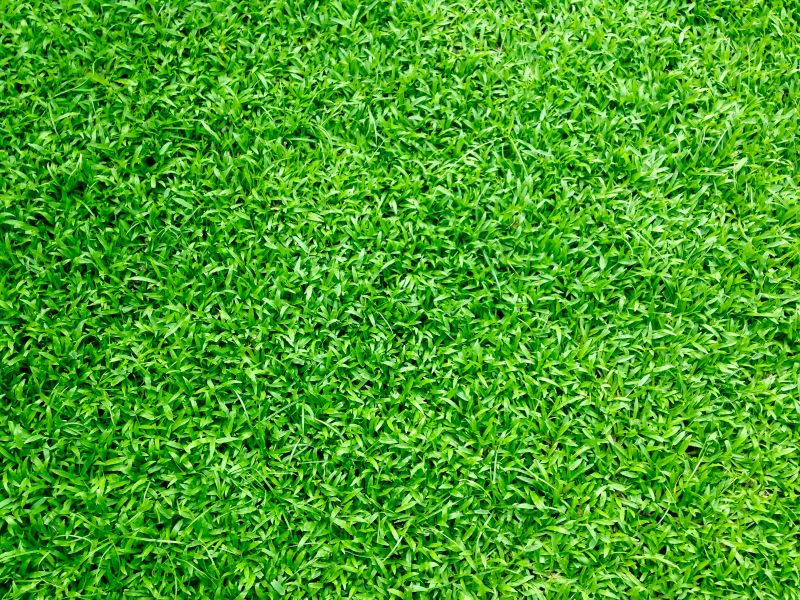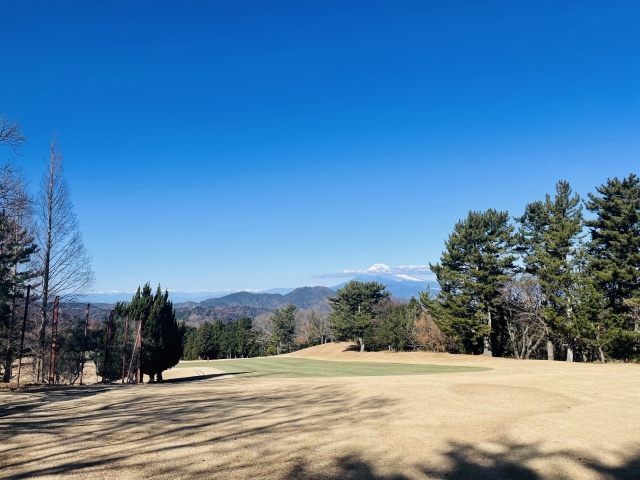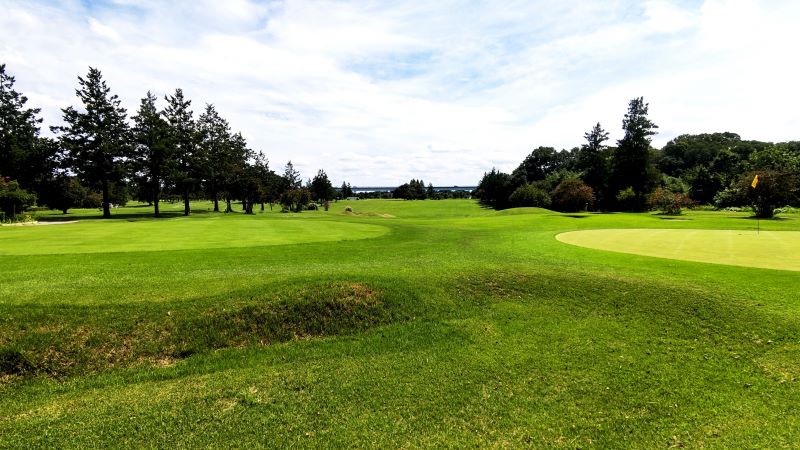At the golf course where you usually play, there is one green on each hole, right? There are some anomalous styles where two separate holes share a green, such as the double greens at St. Andrews, Old Course, but that would be a rare case.
In Japan, however, the situation is a bit different. In Japan, there are often two greens on a single hole. Why is that? Let’s find out.

Turfgrass on Golf Courses
First, let’s look at the turfgrasses commonly used on golf courses. As golfers know, there are several types of turfgrass used on golf courses. In Japan, we often see (or hear) Bent grass, Bermuda grass, and Korai grass (Zoysia tenuifolia). Broadly speaking, Bent grass and Bermuda grass are Western turf, while Korai is Japanese turf.

The Bent grass is a cool season Western grass that prefers cooler climates. It thrives at low temperatures and does not hibernate. On the other hand, it is sensitive to heat. Creeping bent grass has delicate, soft leaves and produces a dense, beautiful lawn. Creeping bent grass is often used for greens on golf courses, and currently the majority of turfgrass used for greens on golf courses around the world is creeping bent grass, and this trend is expected to continue for some time to come.
The Bermuda grass is the generic name for “warm-season Western grasses”. It is tolerant of high temperatures and grows well from spring to fall, but is weak against cold and stops growing at low temperatures and goes into hibernation. It is also “tread pressure tolerant” and is often used on golf courses because it has the vitality to resist being trampled no matter how much it is trampled. Tifton, bluegrass, and ryegrass also belong to this group.
The Korai grass (Zoysia tenuifolia) is a warm-season Japanese grass. It is extremely tolerant of heat and drought, and can withstand tread pressure and humidity. It tends to die and turn yellow/brown in winter and grows slightly slower in spring. It is suitable for Japanese summers and is used for sports fields, parks, golf courses, etc. in Japan. Korai grass is often used for teeing grounds and fairways because it is hard and has a strong texture, making it easy for the ball to float. Hime-korai grass is softened by breeding, and is used for greens.
Because of these different characteristics, the suitable turfgrass also differs depending on the region. In Japan’s monsoon climate, with its hot and humid summers and cold, dry winters, Japanese turf grass is still the best grass for fairways, while coleus is often used for fairways, and Noshiba (Zoysia japonica), which has harder leaves and lower density than coleus, is used for roughs.
However, since Japan is vertically shaped, the climate differs from north to south. Hokkaido has a cool climate throughout the year, so cool season Western grasses are often used for fairways, while Bermuda, a warm-season grass also used in Hawaii and Guam, is often used in Okinawa.
How was the alternative green created?
The first golf course built in Japan was the Kobe Golf Club, built on Mt. Rokko by the English trader A. H. Groom. The fairways and roughs were made of Japanese grass, which had been used mainly in the gardens of Ijinkan (foreign residences) since the Meiji period and was already known to be easy to manage, but the greens were initially made of sand.
Later, Korai grass came into use, but Korai grass dies in the winter. However, Korai grass is dead in winter, so they began to try to introduce evergreen grass that stays green in winter, as in Europe and the United States.

In 1932, bentgrass greens were introduced for the first time in Japan at the Kasumigaseki Country Club West Course, which was also the site of the Tokyo Olympics. Although the greens grew beautifully and were praised at the opening ceremony in June, two months later, in August, conditions deteriorated rapidly due to the extreme heat. The golf course was unavoidably closed temporarily and emergency measures such as disinfection and irrigation were taken, but it was not until December that the greens fully recovered.
As a stopgap measure, a second green of Korai grass was created on each hole, with the policy of using Korai grass summer and Bent grass in winter. This was the beginning of the two-green system in Japan. From then until the end of the 1970s, most golf courses were built with two greens.
By the way, the Tokyo Golf Club Asaka Course was the first course in Japan to use bent grass on all greens, fairways, and rough.
Nowadays, more and more golf courses have one green
Golf courses that had introduced two types of greens have basically used two types of greens: Korai green (for summer) and Bent green (for winter). However, thanks to improvements in the quality of bent greens and advances in maintenance technology, it is now possible to maintain good bent greens all year round even in Japan, a country with high temperatures and humidity.
As a result, more and more golf courses are converting their two-green courses to one green, including Kasumigaseki Country Club, the birthplace of the two-green course, which converted its West Course to one green in 1998. (The East Course was also converted to one green in 2016.)
On the other hand, some golf courses are switching from two greens, one of which is Korai green and the other of Bent green, to two greens, both of which are Bent green. This is to emphasize course management, and based on turf conditions and reservations, the golf course can choose which greens to use on any given day.
Considering global standards, one green is probably preferable, but given Japan’s hot and humid climate, turf management is quite difficult, and it is thought that there will be a certain number of golf courses with two greens in the future.
On golf courses with two greens, the remaining distance varies depending on the greens used and the type of green grass (even the same bent grass can be of different varieties), so you can enjoy the fun of strategy no matter how many times you play a round of golf.
In this post, I have told you about the two-green system that is only available in Japan.
You may feel a bit bewildered by the Galapagos-like evolution of golf in Japan, but I hope you will enjoy it as an experience that can only be had in Japan.



